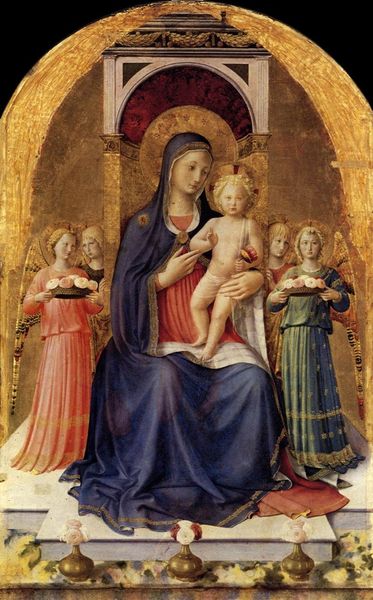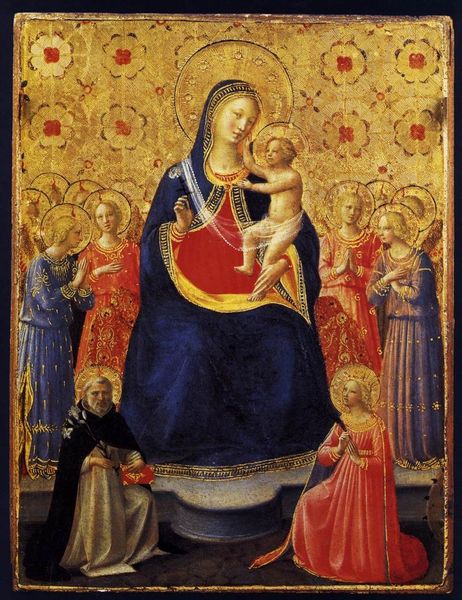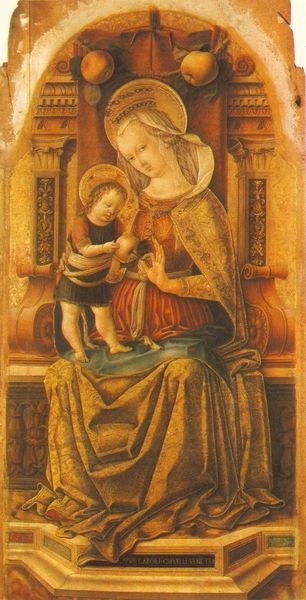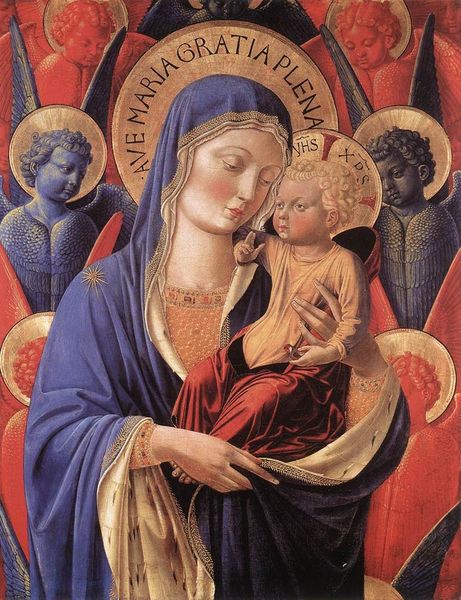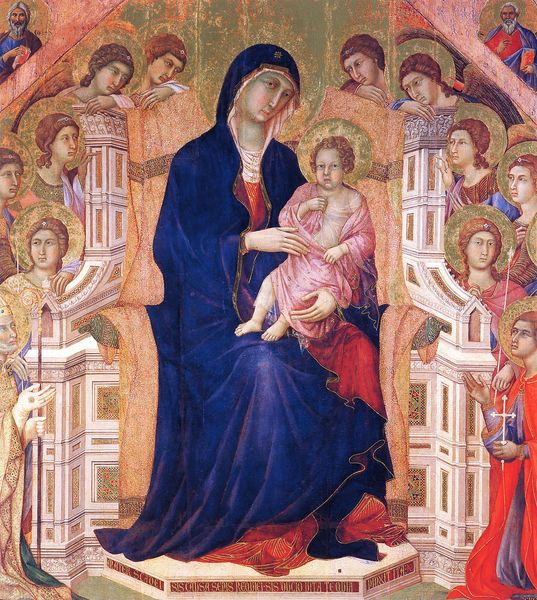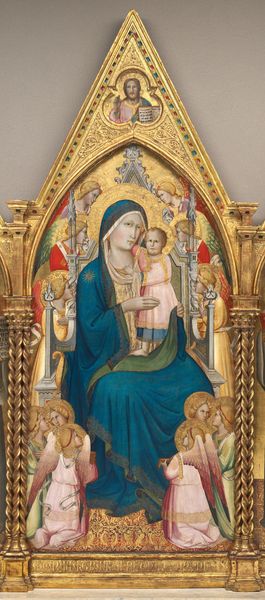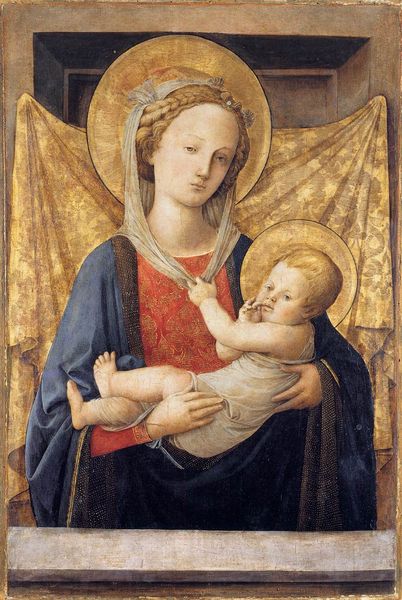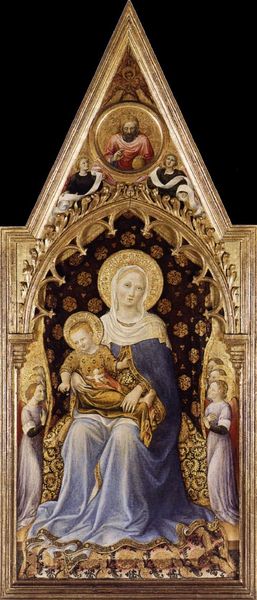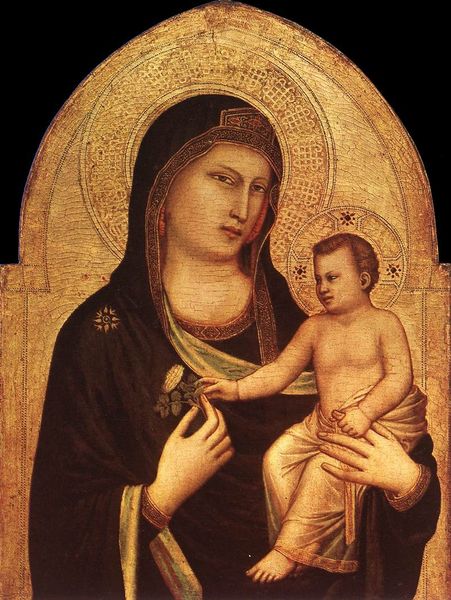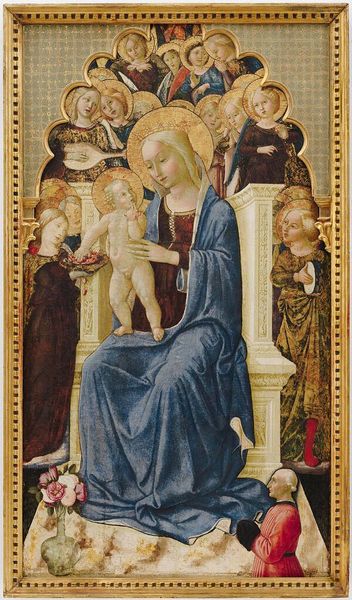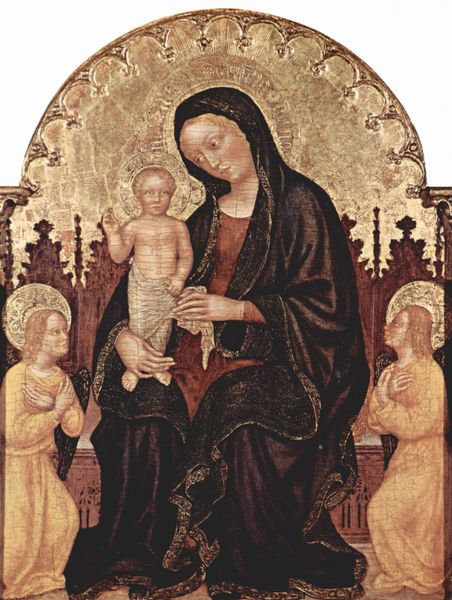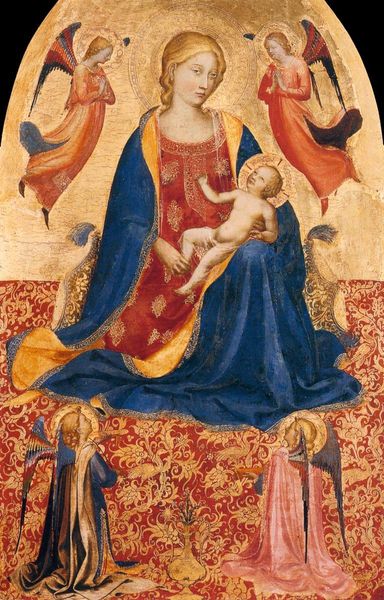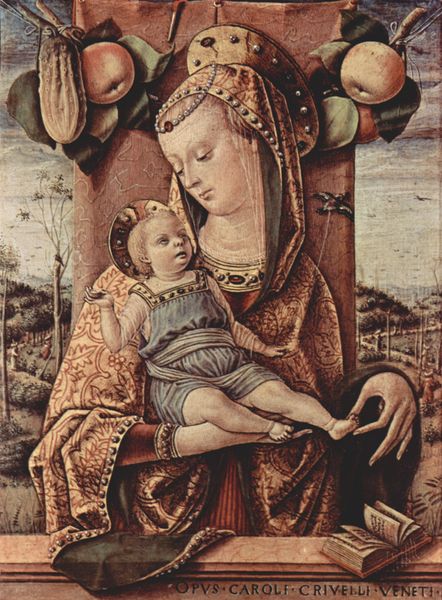
tempera, painting
#
portrait
#
tempera
#
painting
#
figuration
#
history-painting
#
italian-renaissance
Dimensions: 70 x 51 cm
Copyright: Public domain
When did the Italian Renaissance begin? 🎨 Fra Angelico’s Madonna and Child (1433) exemplifies Early Renaissance painting. It depicts the Virgin Mary holding the infant Christ. The pair are surrounded by ornate gold details, displaying the intense craftsmanship involved in the production of the painting. 🏆 The warm and luxurious background colour palette is juxtaposed by the rich blue shade of Mary’s mantle (cloak). Blue is closely associated with the figure of the Madonna. Why blue? The colour was worn by the rulers of the Byzantine Empire, and thus would evoke royalty and majesty in the minds of the early fifteenth-century viewers. Its connection to the colour of the sky reinforces Mary’s status as Queen of Heaven. Further, the bold pigment was produced by grinding lapis lazuli, a remarkably expensive semi-precious stone. This speaks to the immense wealth of the work’s patron. When combined with the gold leaf applied to the spherical haloes crowning the figures, this image offers a fascinating insight into the use of art to enhance the prestige of its owner. 👑 The balanced and ordered composition creates an impression of harmony which is enhanced by Mary’s serene expression. Two saints have been placed on either side of the painting. They gaze towards Mary with clasped hands, indicating their devotion and worship. 🙏 Born in 1395, Fra Angelico (‘the Angelic friar’) was a Dominican friar who exclusively produced religious paintings. In his influential biography of Renaissance artists, ‘The Lives of the Most Excellent Painters, Sculptors and Architects’ (1550), Giorgio Vasari called Fra Angelico a ‘perfect talent’. Fra Angelico represents a transformative period in Italian art. Building on the technical advancements of Giotto (who is widely recognised as the first Renaissance artist) a century earlier, Fra Angelico incorporated aspects of the Gothic and the Renaissance to construct compelling Christian works. Unlike traditional Byzantine icons, the figures in Angelico’s paintings are individualised and expressive. He uses shading to build depth and three-dimensionality. In this painting, Angelico uses hierarchical proportion. The figure of Mary is unrealistically large in relation to the size of Jesus and the flanking saints. This visually signifies her importance. How do you think this work differs from the painting of the High Renaissance? Take a look at a work by Leonardo or Raphael. What points of similarity and difference can you notice? 💬👇 Editor: Lucy Jude Grantham
Comments
No comments
Be the first to comment and join the conversation on the ultimate creative platform.
